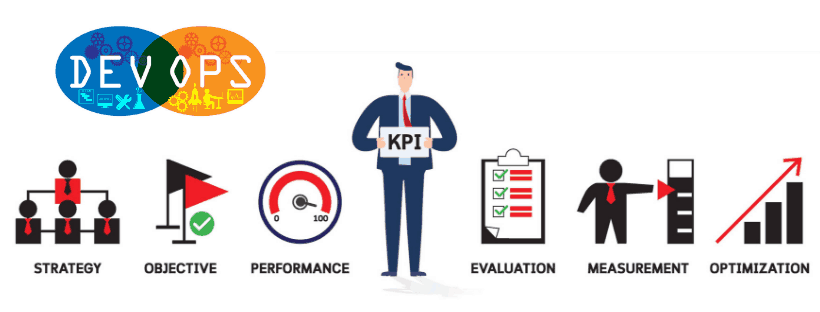DevOps first made its mark as an option for streamlining software delivery. Today, DevOps is widely regarded as an essential component of the delivery process. Key DevOps processes are involved in everything from securing to maintaining applications.
DevOps practices and principles alone won’t ensure quality and could even cause more issues if not integrated correctly. In the effort to deliver software to the market as quickly as possible, companies risk more defects being caught by the end-user.
The modern era of end-to-end DevOps calls for the careful integration of key performance indicators (KPIs). The right metrics can ensure that applications reach their peak potential.
Ideally, DevOps Metrics and KPIs present relevant information in a way that is clear and easy to understand. Together, they should provide an overview of the deployment and change process, and where improvements can be made.
The following metrics are worth tracking as you strive to improve both efficiency and user experience.

DevOps Metrics and Key Performance Indicators
1. Deployment Frequency
Deployment frequency denotes how often new features or capabilities are launched. Frequency can be measured on a daily or weekly basis. Many organizations prefer to track deployments daily, especially as they improve efficiency.
Ideally, frequency metrics will either remain stable over time or see slight and steady increases. Any sudden decrease in deployment frequency could indicate bottlenecks within the existing workflow.
More deployments are typically better, but only up to a point. If high frequency results in increased deployment time or a higher failure rate, it may be worth holding off on deployment increases until existing issues can be resolved.
Learn about leading and lagging KPIs.
2. Change Volume
Deployment frequency is of little value if most deployments have little consequence.
The actual value of deployments may be better reflected by change volume. This DevOps KPI measures the degree to which code changes versus remains static. Improvements in deployment frequency should not have a significant impact on change volume.
3. Deployment Time
How long does it take to roll out deployments once they’ve been approved?
Naturally, deployments can occur more frequently if they’re quick to implement. Dramatic increases in deployment time warrant further investigation, especially if they are accompanied by reduced deployment volume. While short deployment time is essential, it shouldn’t come at the cost of accuracy. Increased error rates may suggest that deployments occur too quickly.
4. Failed Deployment Rate
Sometimes referred to as the mean time to failure, this metric determines how often deployments prompt outages or other issues.
This number should be as low as possible. The failed deployment rate is often referenced alongside the change volume. A low change volume alongside an increasing failed deployment rate may suggest dysfunction somewhere in the workflow.
5. Change Failure Rate
The change failure rate refers to the extent to which releases lead to unexpected outages or other unplanned failures. A low change failure rate suggests that deployments occur quickly and regularly. Conversely, a high change failure rate suggests poor application stability, which can lead to negative end-user outcomes.
6. Time to Detection
A low change failure rate doesn’t always indicate that all is well with your application.
While the ideal solution is to minimize or even eradicate failed changes, it’s essential to catch failures quickly if they do occur. Time to detection KPIs can determine whether current response efforts are adequate. A high time to detection could prompt bottlenecks capable of interrupting the entire workflow.
7. Mean Time to Recovery
Once failed deployments or changes are detected, how long does it take to actually address the problem and get back on track?
Mean time to recovery (MTTR) is an essential metric that indicates your ability to respond appropriately to identified issues. Prompt detection is ineffective if not followed by an equally rapid recovery effort. MTTR is one of the best-known and commonly cited DevOps key performance indicator metrics.
8. Lead Time
Lead time measures how long it takes for a change to occur.
This metric can be tracked from idea initiation through deployment and production. Lead time offers valuable insight into the efficiency of the entire development process. It also indicates the current ability to meet the user base’s evolving demands. Long lead times suggest harmful bottlenecks, while short lead times indicate that feedback is addressed promptly.
9. Defect Escape Rate
Every software deployment runs the risk of sparking new defects. These might not be discovered until acceptance testing is completed. Worse yet, they could be found by the end user.
Errors are a natural part of the development process and should be planned for accordingly. The defect escape rate reflects this reality by acknowledging that issues will arise and that they should be discovered as early as possible.
The defect escape rate tracks how often defects are uncovered in pre-production versus during the production process. This figure can provide a valuable gauge of the overarching quality of software releases.
10. Defect Volume
This metric relates to the escape rate highlighted above, but instead focuses on the actual volume of defects. While some defects are to be expected, sudden increases should spark concern. A high volume of defects for a particular application may indicate issues with development or test data management.
11. Availability
Availability highlights the extent of downtime for a given application.
This can be measured as complete (read/write) or partial (read-only) availability. Less downtime is nearly always better. That being said, some lapses in availability may be required for scheduled maintenance. Track both planned downtime and unplanned outages closely, keeping in mind that 100 percent availability might not be realistic.
12. Service Level Agreement Compliance
To increase transparency, most companies operate according to service level agreements. These highlight commitments between providers and clients. SLA compliance KPIs provide the necessary accountability to ensure that SLAs or other expectations are met.
13. Unplanned Work
How much time is dedicated to unexpected efforts? The unplanned work rate (UWR) tracks this in relation to time spent on planned work. Ideally, the unplanned work rate (UWR) will not exceed 25 percent.
A high UWR may indicate that efforts were wasted on unexpected errors that were likely not detected early in the workflow. The UWR is sometimes examined alongside the rework rate (RWR), which relates to the effort to address issues brought up in tickets.
14. Customer Ticket Volume
As the defect escape rate KPI suggests, not all defects are disastrous. Ideally, however, they will be caught early. This concept is best reflected in customer ticket volume, which indicates how many alerts end users generate. Stable user volume alongside increased ticket volume suggests issues in production or testing.
15. Cycle Time
Cycle time metrics provide a broad overview of application deployment.
This KPI tracks the entire process, from ideation to user feedback. Shorter cycles are generally preferable, but not at the expense of discovering defects or abiding by SLAs.
Start Measuring DevOps Success
When tracking key DevOps metrics, focus less on the perceived success or failure according to any one indicator, but rather, on the story these metrics tell when examined together. A result that seems problematic on its own could look completely different when analyzed alongside additional data.
Careful tracking of the KPIs highlighted above can ensure not only greater efficiency in development and production, but more importantly, the best possible end-user experience. Embracing DevOps metrics can lead to vast improvements in application deployment and feedback.



